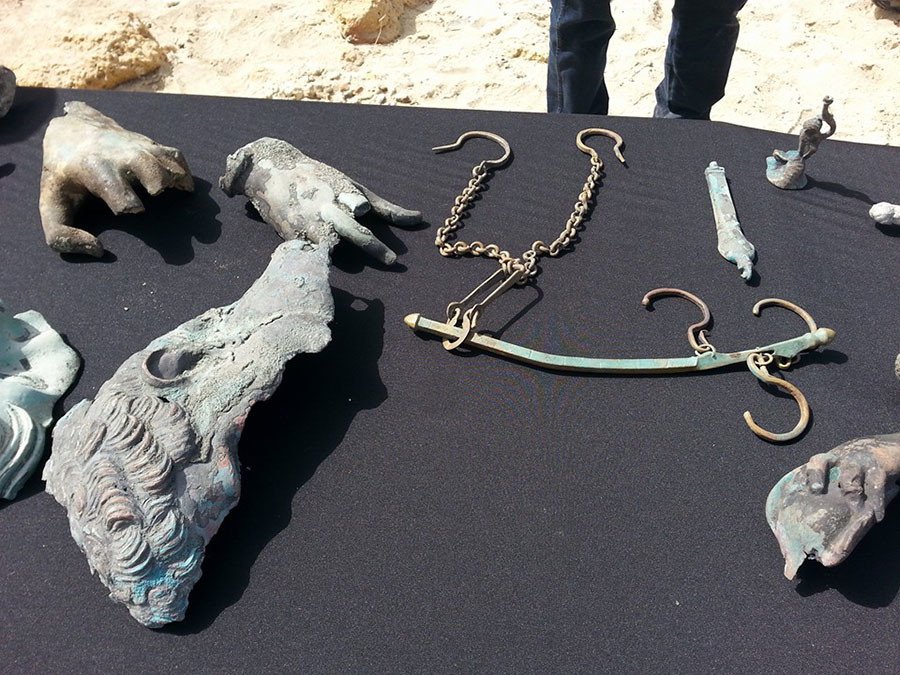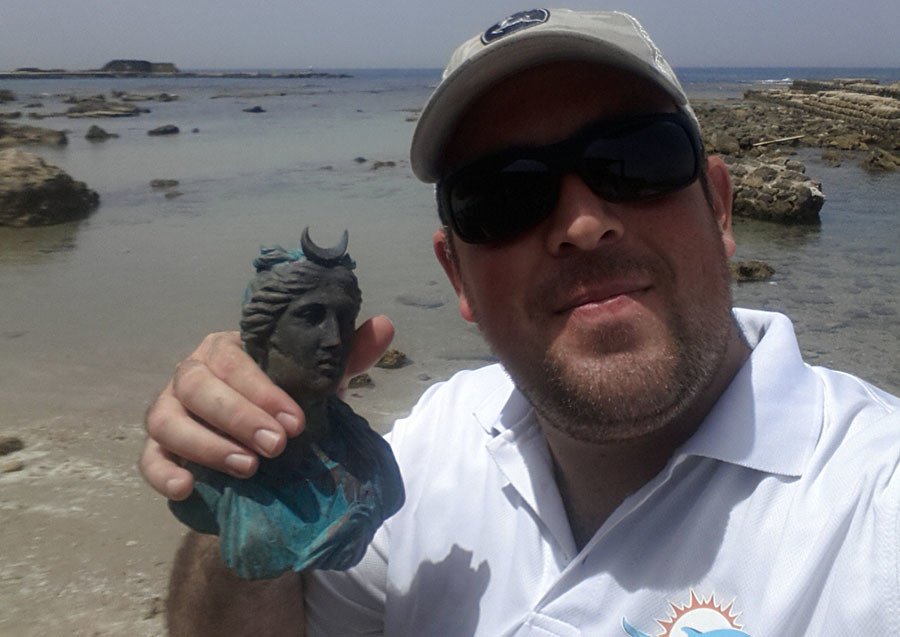Shipwrecked Roman treasure ‘saved’ from ancient recycling by devastating storm (PHOTOS, VIDEO)
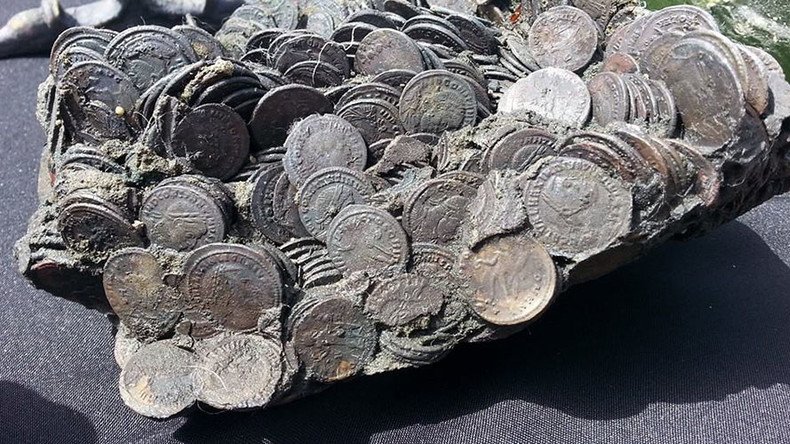
Sunken treasure pulled from the seabed of an ancient harbor in Israel was likely scattered during the destruction of a metal-laden merchant ship in a violent storm 1,600 years ago.
Divers from the Israel Antiquities Authority (IAA) have unearthed ancient artefacts from the port of Caesarea, a lucrative trading hub during the Roman Empire which was built by King Herod the Great.
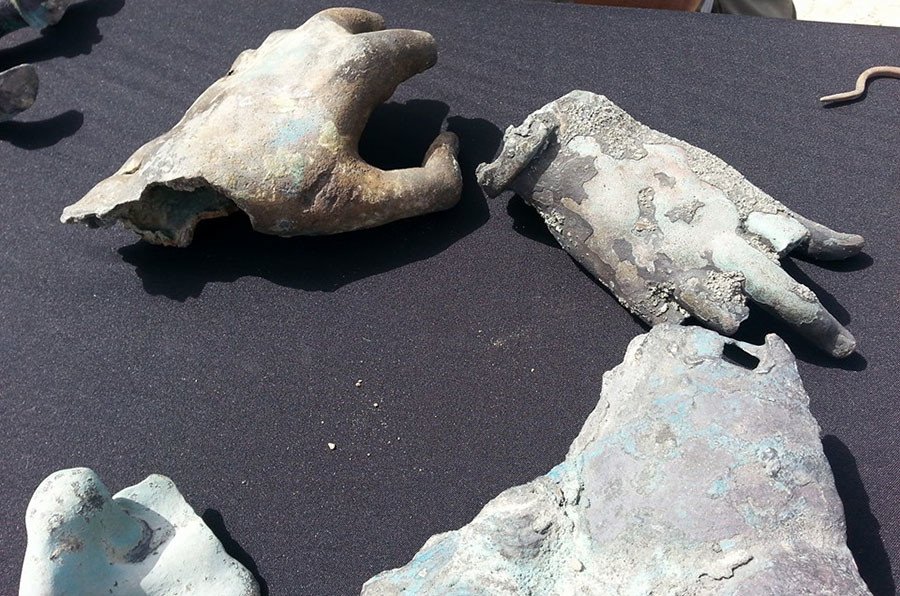
The hoard of riches date from the Late Roman period and their discovery is described as a “fortuitous” find by the IAA, after two amateur divers spotted several submerged relics in Caesarea National Park, outside the city of Haifa.
A subsequent dive by IAA archaeologists and volunteers led to the discovery of a wooden vessel and nearby items such as iron anchors, metallic statues and coins. Many of these antiquities were cast during the reign of Emperor Constantine, who ruled around 300AD.
Among the items currently being studied by archaeologists are a bronze lamp of the sun god Sol, three life-size bronze statues, 20kg clumps of metal coins, and various ceramic pots.
The protective cover of sand at the bottom of the sea has kept the artifacts in almost pristine condition and the face of Constantine, the first Christian Roman Emperor, can be seen etched on the ancient currency.
Experts say the haul is the biggest in Israel in 30 years and appears to be the result of a violent tempest, which forced a vessel to crash up against a nearby seawall.
“These are extremely exciting finds, which apart from their extraordinary beauty, are of historical significance,” said Jacob Sharvit, head of marine archaeology at the IAA.
“The location and distribution of the ancient finds on the seabed indicate that a large merchant ship was carrying a cargo of metal slated recycling, which apparently encountered a storm at the entrance to the harbor,” he said.
“A preliminary study of the iron anchors suggests there was an attempt to stop the drifting vessel before it reached shore by casting anchors into the sea. However, these broke - evidence of the power of the waves and the wind which the ship was caught up in.”
Interestingly, many of the items might have been lost forever were it not for mother nature’s disastrous intervention.
According to Dror Planer, deputy director of the IAA Marine Archaeology Unit, precious metals were constantly being melted down at the time for reuse.
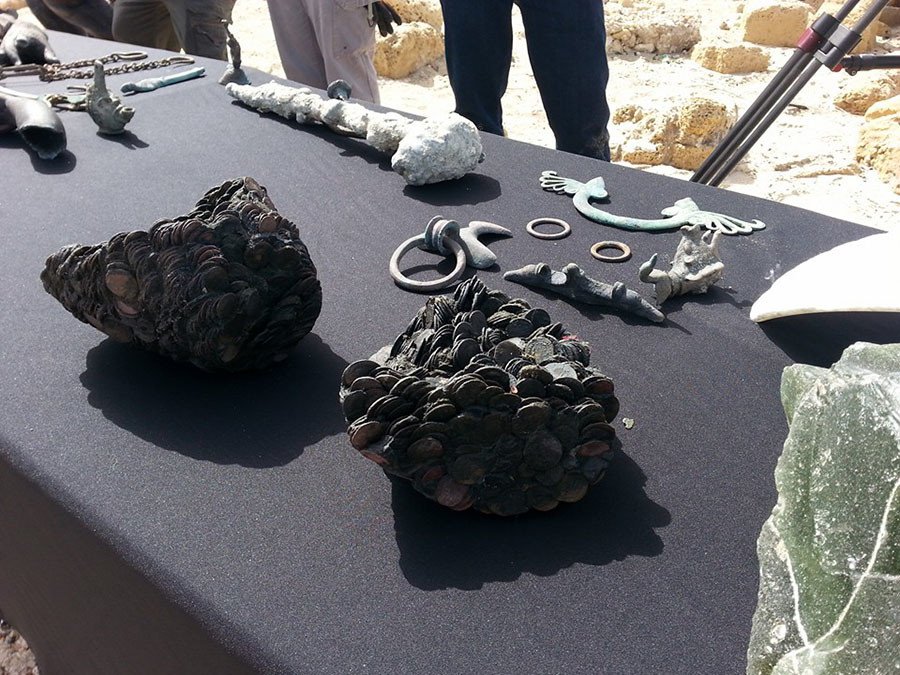
“Metal statues are rare archaeological finds because they were always melted down and recycled in antiquity. When we find bronze artifacts it usually occurs at sea,” Planer said.
“Because these statues were wrecked together with the ship, they sank in the water and were thus ‘saved’ from the recycling process.”
The two divers who made the initial discovery, Ofer Ra’anan and Ran Fainstein, have shared close-ups of the ancient items on social media.
The images depict a small blue figurine of the moon goddess, Luna, as well as the remains of Roman statues.
